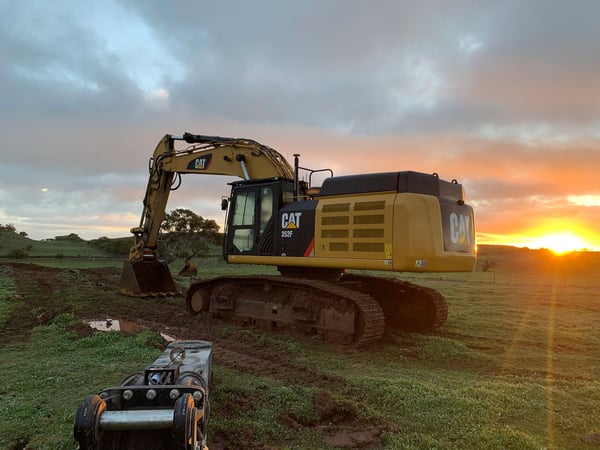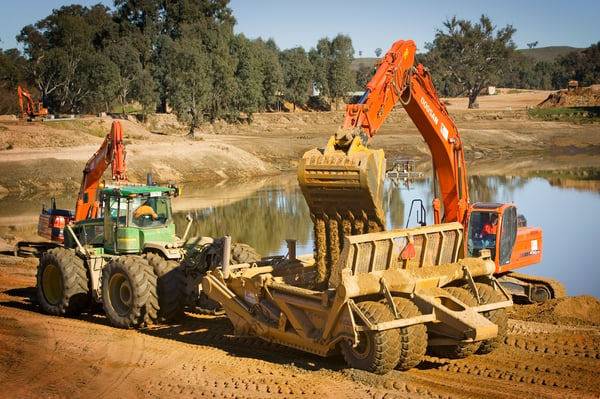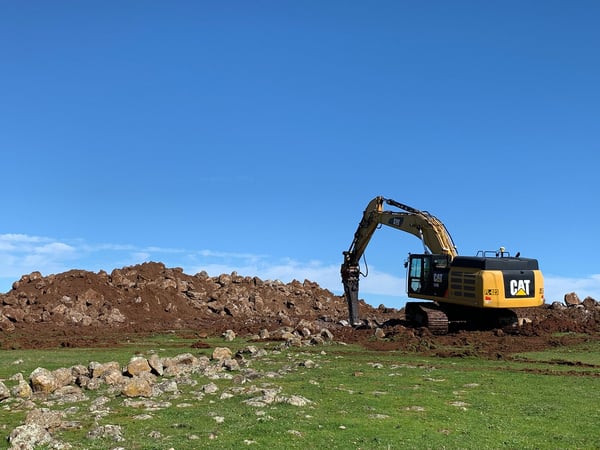During the course of delivering a project, a Project Manager is constantly monitoring three variables as they work to close out a job: the cost, scope and schedule. Even the most experienced PM can encounter unforeseen cost escalations mid-project, but here are some useful tips to help you avoid a cost blowout.
Avoid budget blowouts on site
What is Cost Overrun?

Put simply, cost overrun refers to an increase in project costs due to an underestimation during the budgeting process. The different types of cost overrun can be broadly bucketed into four main types:
1. Estimates
Estimates are too low due to factors such as a poor understanding of the complexities of the job, or optimism bias (judgement being clouded by excitement for the future).
2. Risk
This encompasses the potential factors that can cause losses, such as poor weather affecting completion or the under-performance of a vendor.
3. Scope Creep
This occurs when the deliverables of the job extend beyond what is captured within the budget or the schedule.
4. Cost Escalation
This is the increase over time in the price of a particular line item within the project (such as materials).
How many construction projects go over budget and by how much?
It has been estimated by the Grattan Institute that around 65% of Australian infrastructure projects incur a cost overrun and that the average cost overrun is between 9% and 20% after principle contracts have been awarded. Additionally, it is 20% of the initial project costs that account for approximately 70% of the total value of project overruns. In a 2019 study conducted by KPMG, they identified that only 31% of all construction projects completed came within 10% of budget within the previous three years.
What are the key reasons for cost overruns in construction project management?
Statista reports that the top 10 reasons for cost overruns are as follows:
- Material price escalation (60%)
- Poorly defined scope (55%)
- Contractual disputes (40%)
- Time delays (36%)
- Design creep (32%)
- Not achieving productivities (19%)
- Lack of approvals (6%)
- Weather (4%)
- Commissioning process (2%)
- Industrial relations (2%)
How do you budget a construction project?

While construction projects will always demand a degree of flexibility, there are a number of steps that can be followed in building a construction project budget with minimal surprises:
- Develop a total project budget as early as possible
- Closely analyse the project requirements and drawings to confirm the scope
- Closely review any contractor estimates which will form part of the total project cost
- Ensure the accuracy of time and cost parameters for obtaining any permits or approvals
- Prepare a “soft cost” budget, which includes all non-brick and mortar costs (such as accounting, legal, engineering and architecture)
- Analyse utility, permitting, testing and inspection costs
- Ensure you have a furniture, fixtures and equipment (FFE) design and budget
- Consider and allocate a sufficient cost escalation and contingency – have a Risk Management Plan
- Map and analyse cash flow requirements (the major project-killer)
- Establish controls to allow for real-time tracking of cost fluctuations
How do you avoid cost overrun on a construction project?
Here are some key tips to help you avoid cost overrun on your next construction project:
Tip 1: Thorough project planning conducted well in advance
This seems self-explanatory, but early, detailed preparation will afford you more flexibility during construction. Plan for all scenarios, gather as much information as you can source and ensure complete stakeholder buy-in before project kick-off.
Tip 2: Conduct due diligence on your potential contractors
Working with contractors is an essential part of the construction process, but a decision that must be carefully considered. A poor-performing vendor can contribute significantly to cost overruns that are beyond your control. It is essential to understand the capacity of the contractor (ie what their true core-competency is) and closely analyse their quote – if it appears too good to be true, then it probably is. A thorough background check is also very important.
Tip 3: Be ready for the possibility of scope creep and change orders
Change orders represent a big headache for PMs and are a major contributor to scope creep. The larger the project, the more stakeholders involved and the more likelihood of changes being requested. Ensure you have included change order provisions in your contract negotiation phase which include the plans, steps and budget for required changes or scope creep. This can avoid the situation of contractors increasing their costs to undertake additional work.
Tip 4: Define clear roles and responsibilities for the project
Without a clear organisational structure, you run the risk of personnel disputes and unproductive interactions during the project. It is important to provide all individuals with clarity on their roles and responsibilities throughout the build. Schedules which overlay manpower need to be established, which clearly highlight start and finish dates for the project and construction team to mobilise and de-mobilise from the project. The goal is for no-one to be on site longer than they need to be.
Tip 5: Leverage independent oversight when estimating
Every stakeholder has a vested interest in seeing a project get approval and financing. Often the inputs of a stakeholder will serve to confirm their own preferences and not be the best decision for moving the project forward, resulting in potential problems. Engage a team of independent cost advisers with no ties to your project, to get a true unbiased analysis of the viability of your project. Find a firm that works end-to-end with you to improve cost certainty and considers all elements from managing budgets to dispute resolution to deliver the project on budget.
Tip 6: Utilise experienced project and construction management
Inexperienced project management can lack both the expertise and the self-confidence to effectively lead a project team. On-the-job experience beyond higher education is key to ensure that your project manager can identify and respond to schedule delays, productivity issues and ultimately cost overruns that can cripple your project. Ideally your chosen PM will have extensive experience in managing, estimating, procuring, scheduling and controlling projects of a similar magnitude to what you are undertaking.
Tip 7: Early, regular and clear communication with stakeholders
A key element preventing cost overruns is a clear line of communication between stakeholders and project managers. While stakeholders might want top-line updates, teams need details, so consider what you are communicating to who and how often. Ensure the team on the ground feels empowered and comfortable to raise any issues early, as the quicker they are addressed, the quicker the project can forge ahead.
What percentage of construction projects go over budget?
A 2019 study conducted by KPMG identified that over a three year period from 2016 to 2019, around 69% of construction projects came in over budget, with only 31% of all projects completed coming within 10% of budget.
How do you budget a construction project?

There are a number of steps involved in accurately budgeting for a construction project, which are explained within this article. Some of the key elements are to develop a total project budget early, closely scrutinise contractor estimates, prepare a soft budget and FFE budget and allocate sufficient contingencies for cost escalations.


